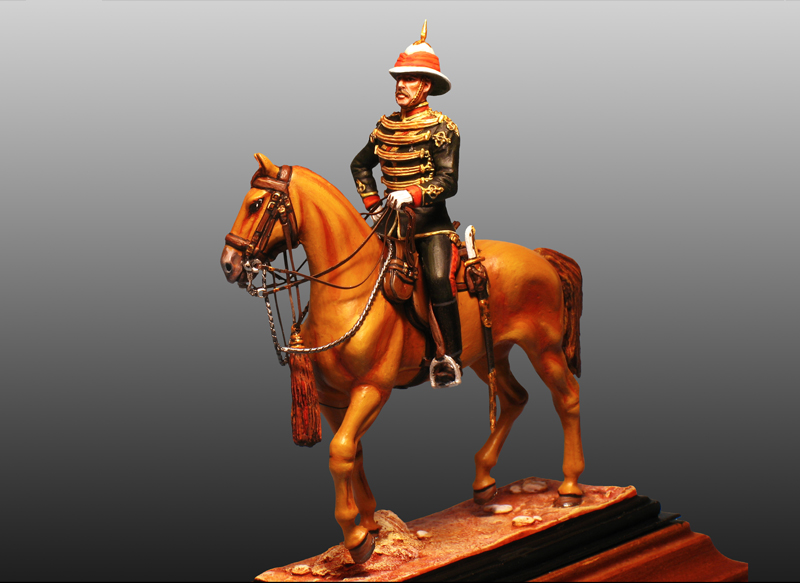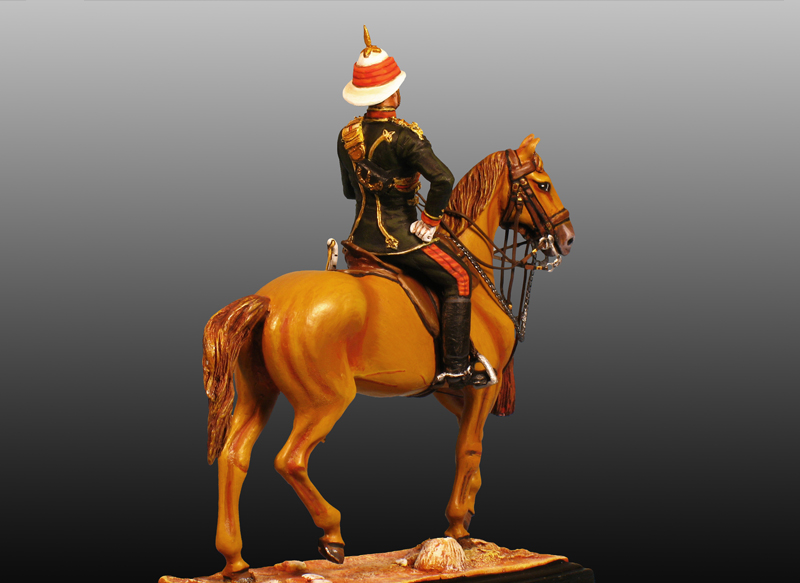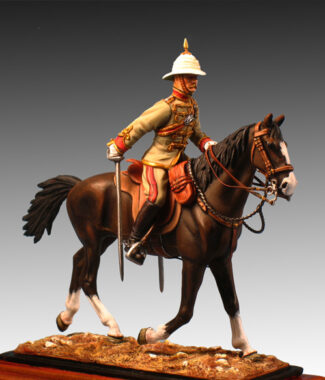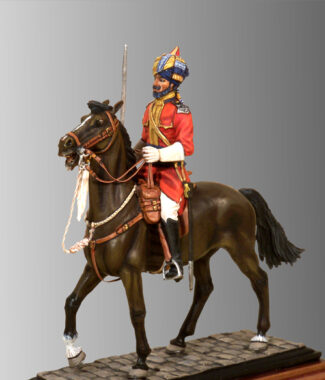Raised 1849 as 5th Regiment of Punjab Cavalry.
1851 – 5th Regiment of Cavalry, Punjab Irregular Force.
1865 – 5th Regiment of Cavalry, Punjab Frontier Force.
1901 – 5th Punjab Cavalry.
1903 – 25th Cavalry (Frontier Force).
In 1921, with the reorganization of the British Army in India, the 25th Cavalry (Frontier Force) amalgamated with the 22nd Sam Browne’s Cavalry (Frontier Force) to become 22/25th Cavalry (Frontier Force).
1922 – 12th Cavalry (Frontier Force).
1927 – Sam Browne’s Cavalry (12th Frontier Force).
1940 – 1st Indian Armoured Corps Centre.
In 1947 after Independence, allocated to Pakistan Army.
1947 – Pakistan Armoured Corps Centre.
1955 – Re-raised 12th Cavalry (Frontier Force)
Battle Honours: Delhi, Lucknow, Charasiah, Kabul 1879, Afghanistan 1878-80.
Composition (1901): Sikhs, Dogras, Hindustani Muhammadans, Punjabi Muhammadsans and Pathans.
The regiment, during the second Afghan war, was under the command of Major General Frederick Roberts (1), participating actively in the battle of Charasiah, where they demonstrated their bravery in combat. Therefore, together with the 9th the Queen’s Royal Lancers, they served as escort to the entrance in Kabul of Lord Roberts.
In 1915 the regiment was sent to East Africa (Tanzania) to fight against the German troops of the Colonel and future General Paul Von Lettow-Vorbeck, just to the Portuguese border of Mozambique.
A letter of 1913 written by an officer of the 25th gives a very full description of the full dress uniforms. This was dark green but in is in fact black, with scarlet collar and cuffs, with gold lace and piping. The full dress British officers wore a Husar shaped tunic with five strands in each row not plaited. In 1909 the gold stripes of overalls was changed by red stripes. This was a Mameluk hilted sword.
This regiment was the only one of the Indian cavalry to wear on the streamer banner the flask cord, cord raised in the cavalry of the Royal Guard.
It was one of the regiments that later adopted the Wolseley pith, initially with the white lungi and later –as shown in the figure – became red.
NOTE (1) – Frederick Roberts will appear in this same collection.








Reviews
There are no reviews yet.